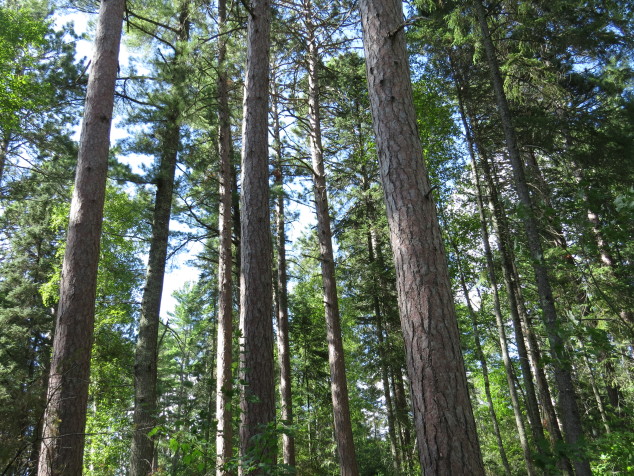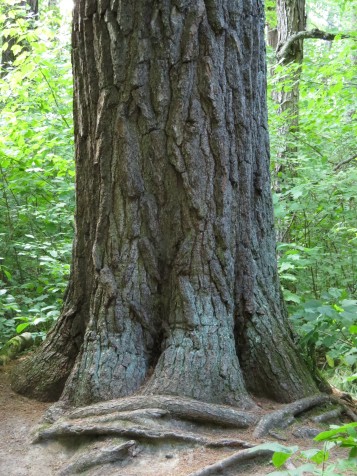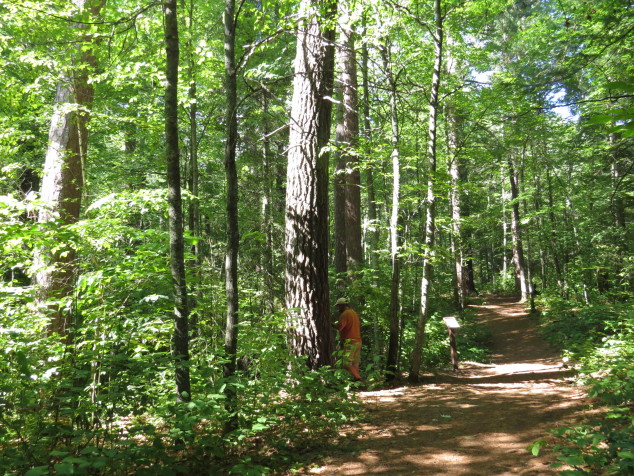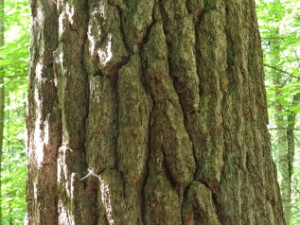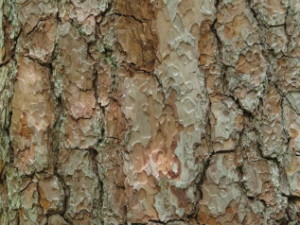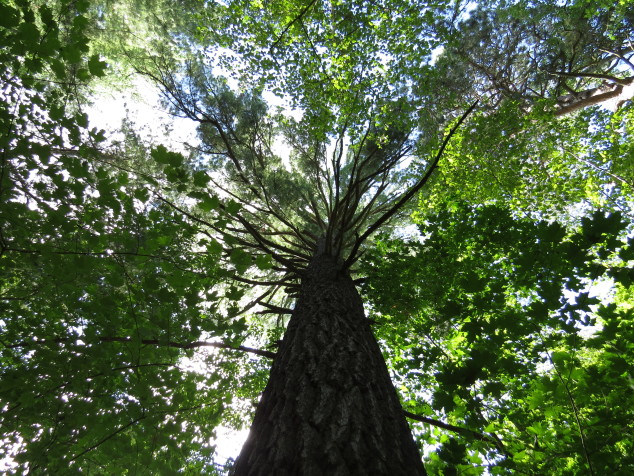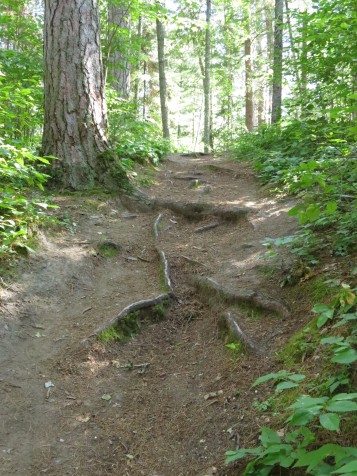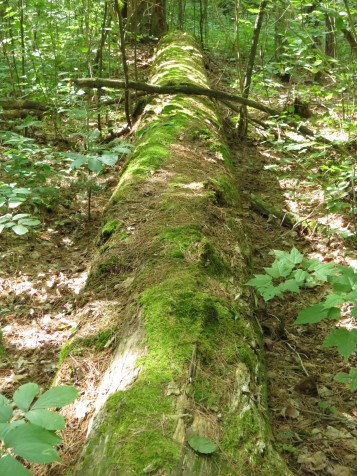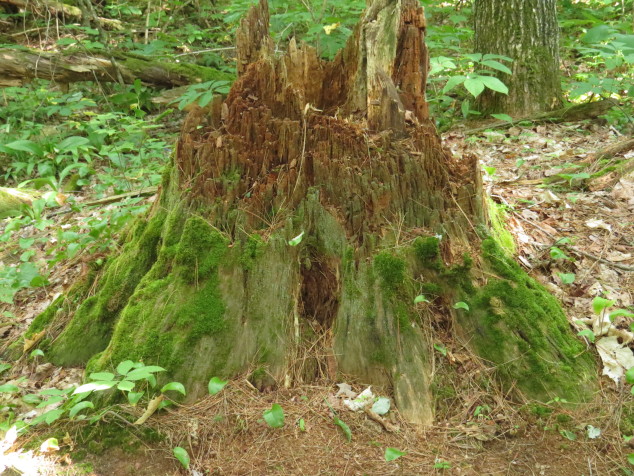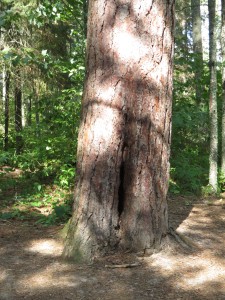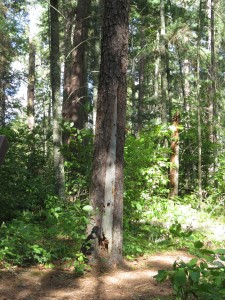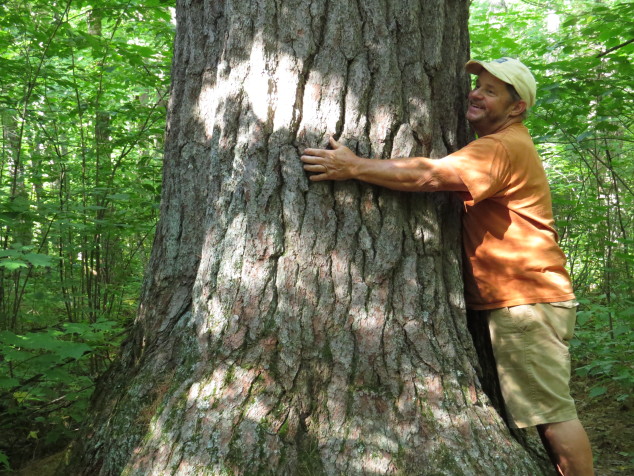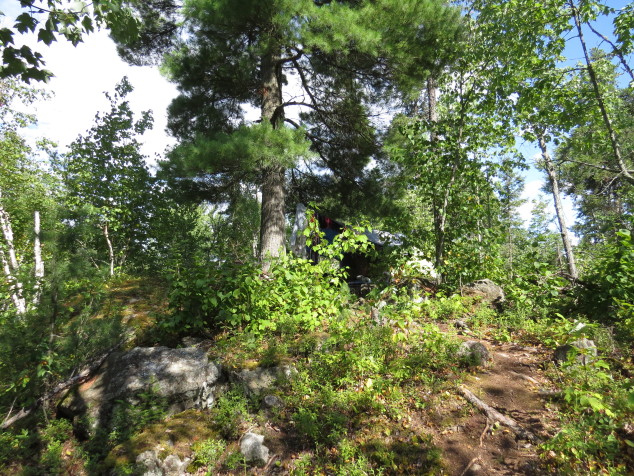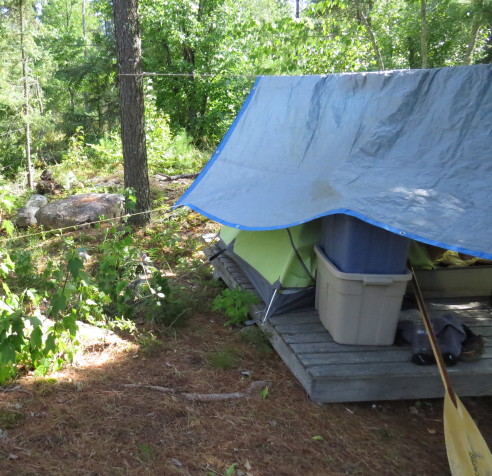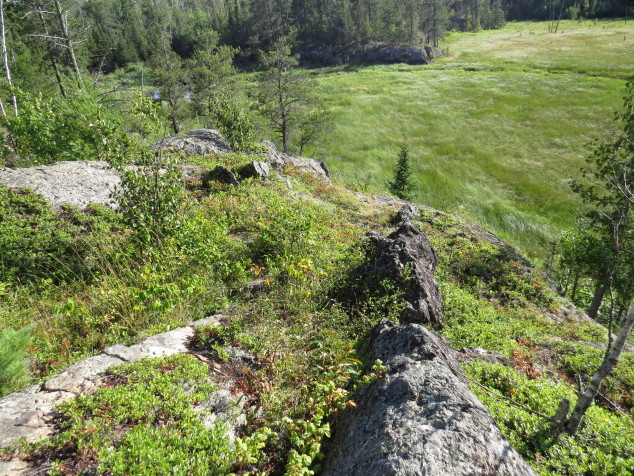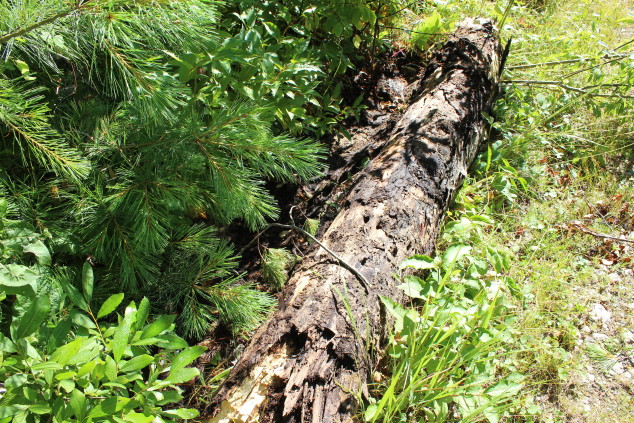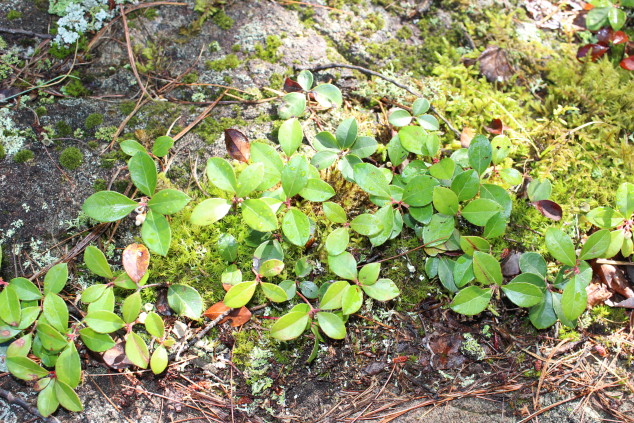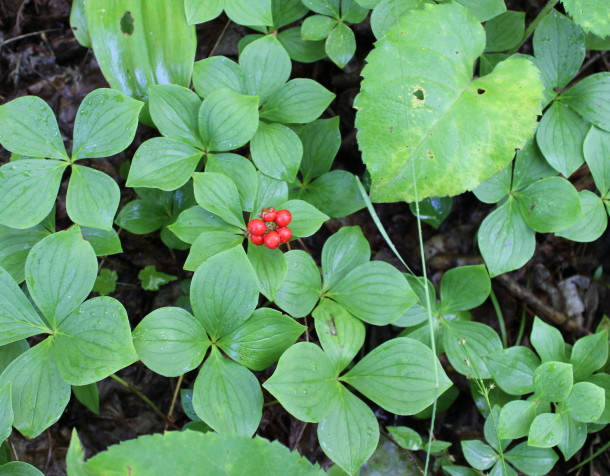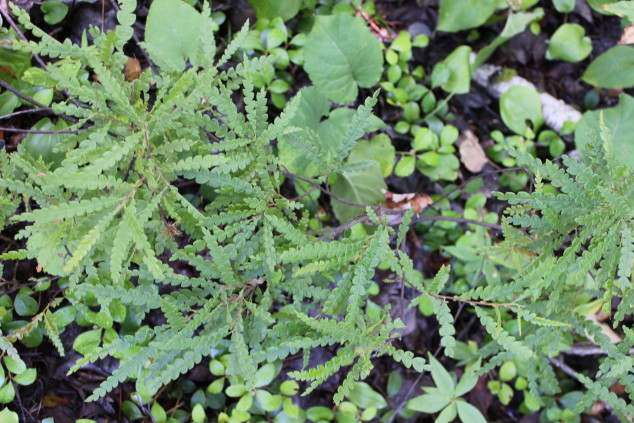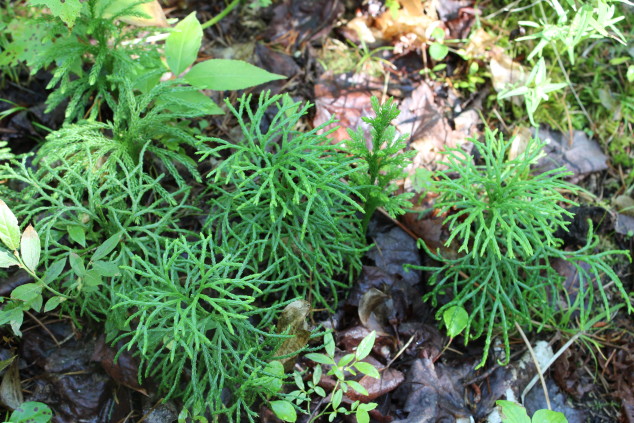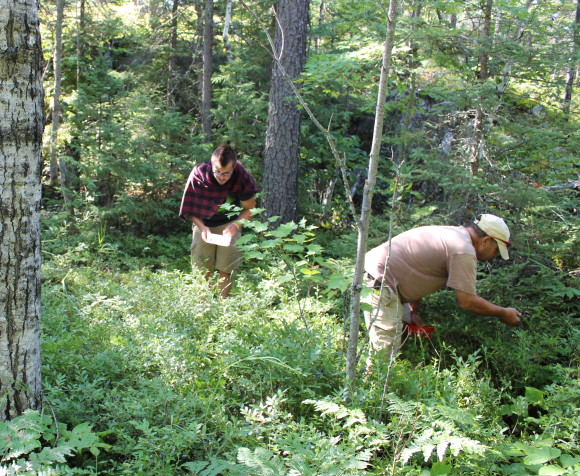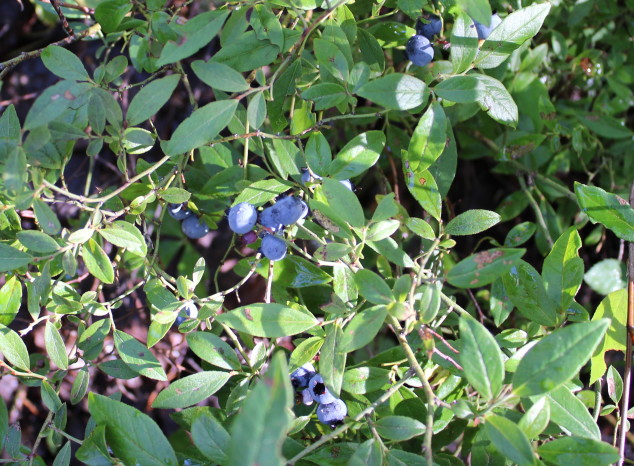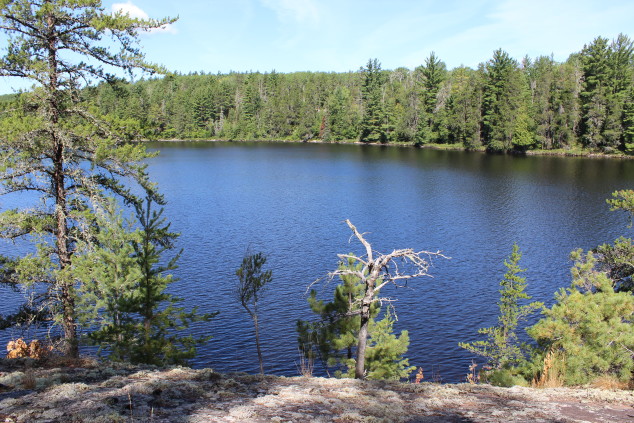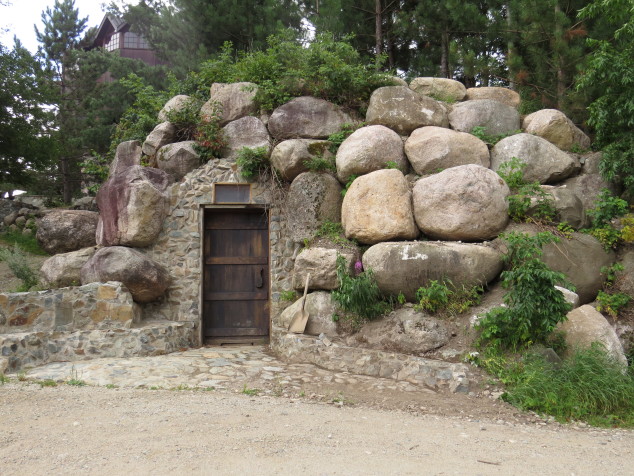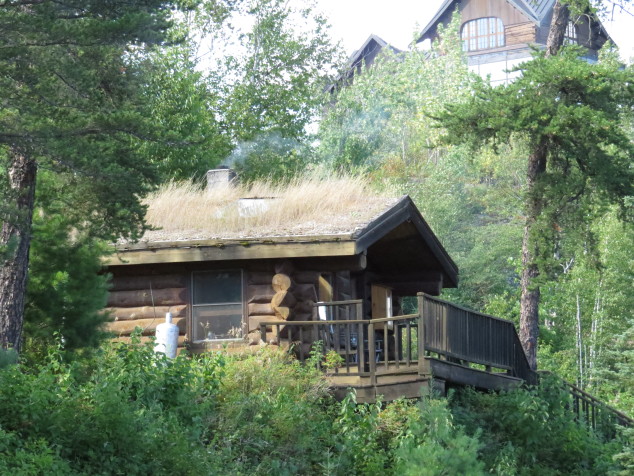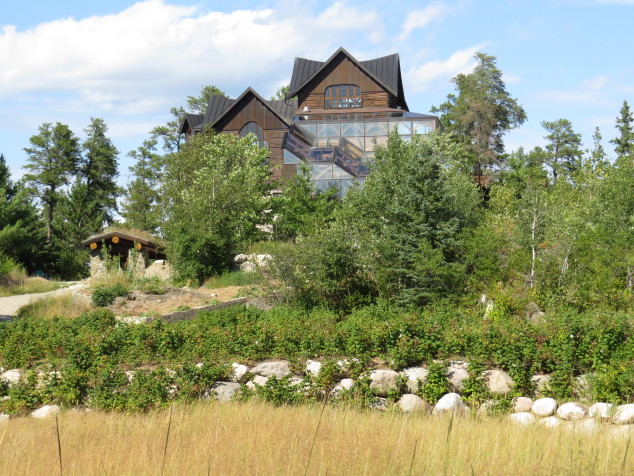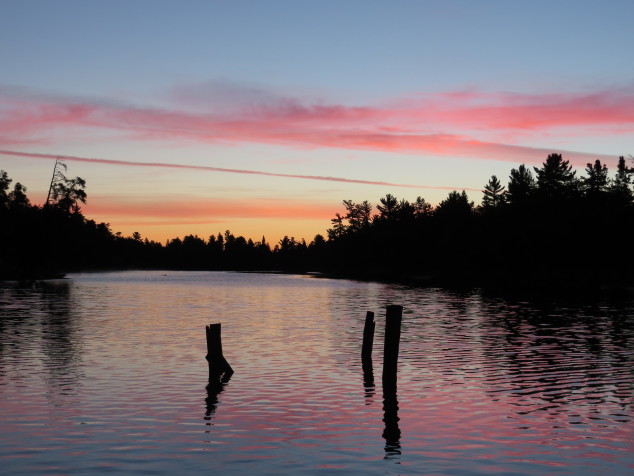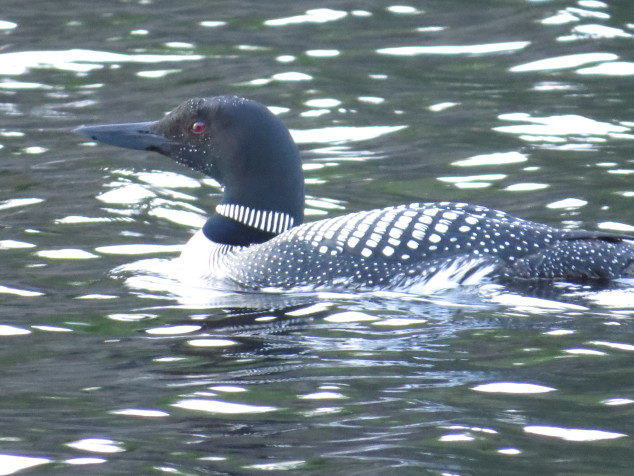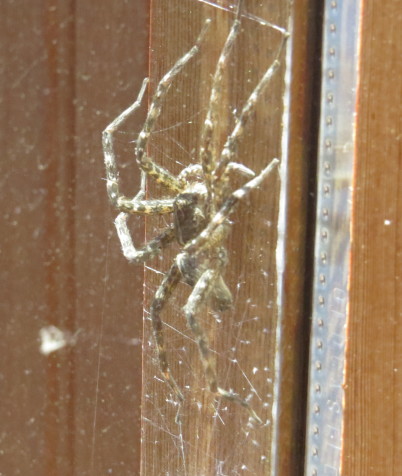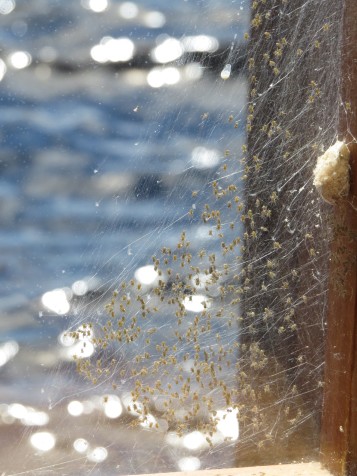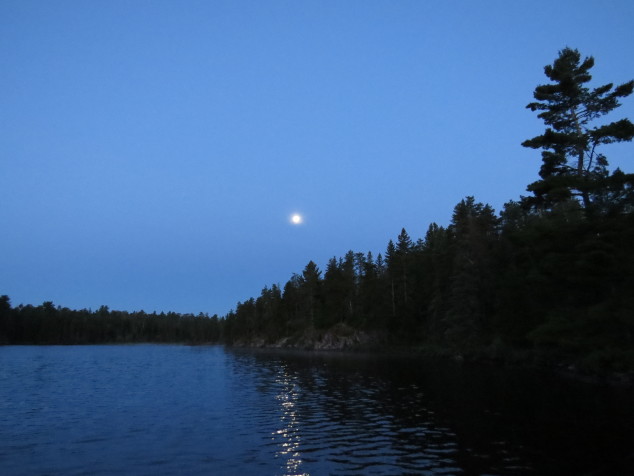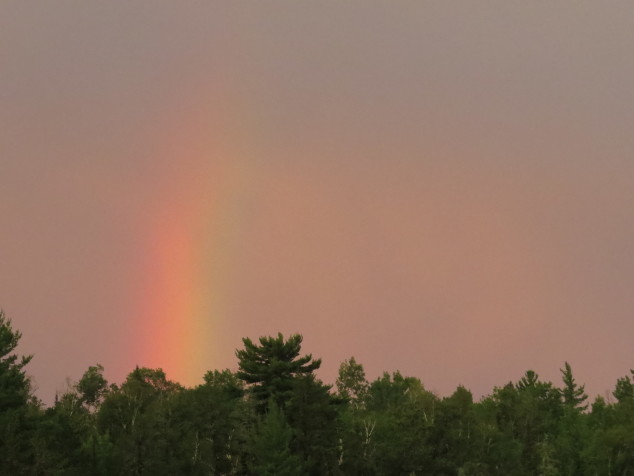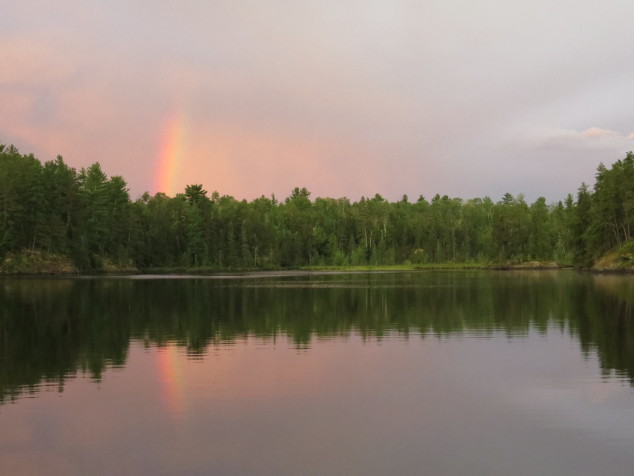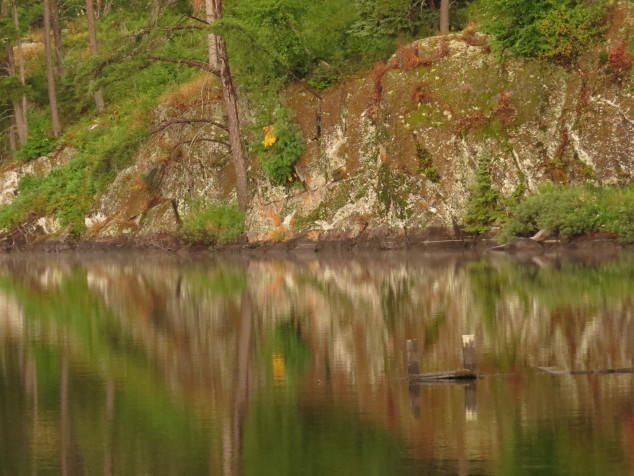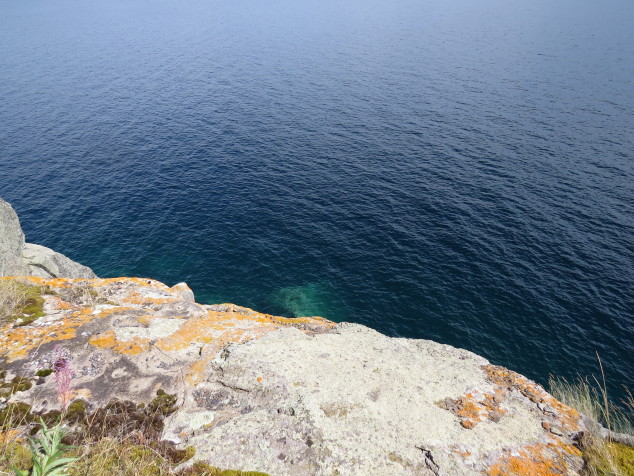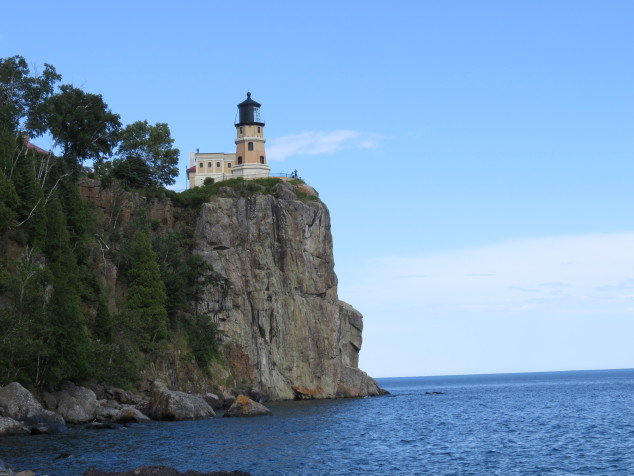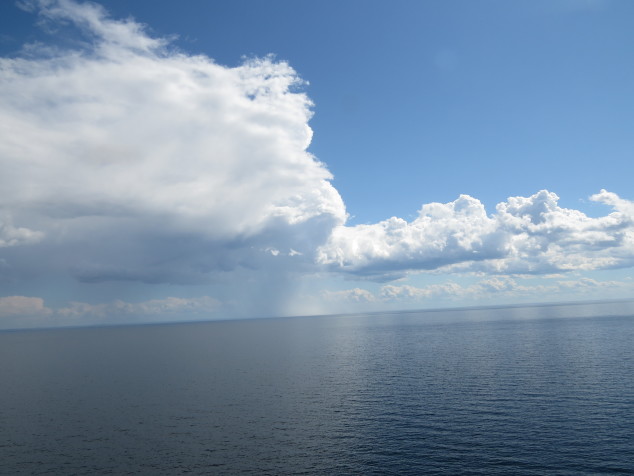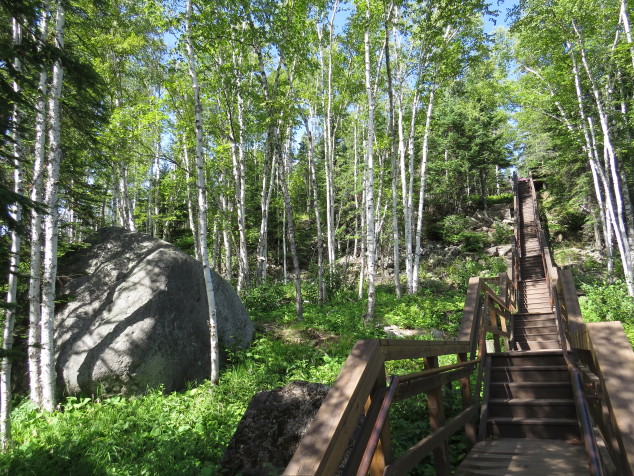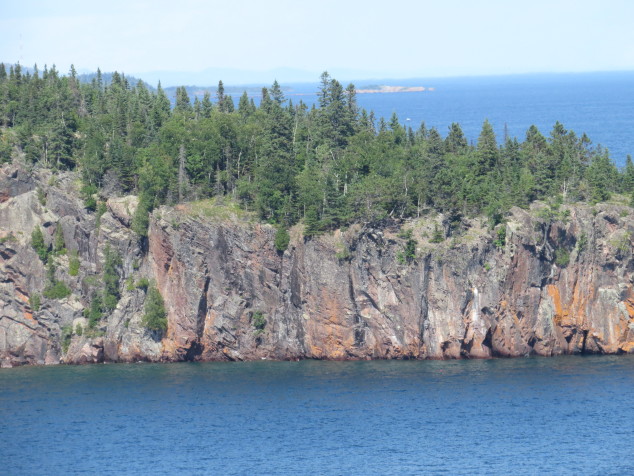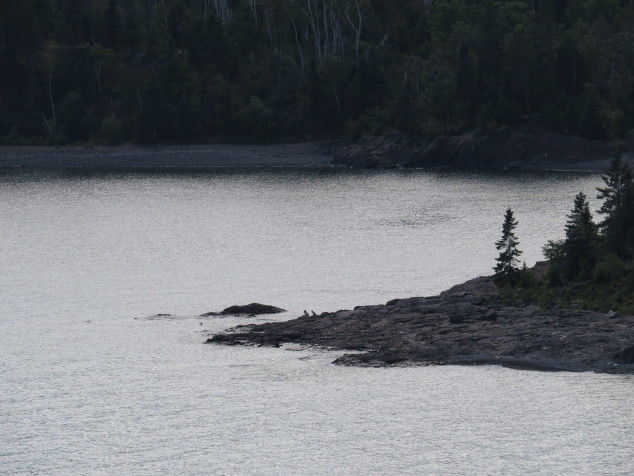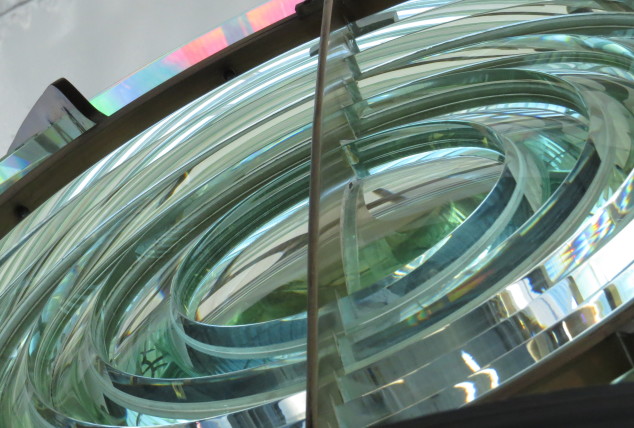It was a mistake that happened a long time ago. In 1882, Josiah King and his three-man survey crew traveled forty miles from the nearest white settlement as part of the first land survey of the Northwoods area. In canvas tents with minimal rations, the team battled bleak, daunting marshes and bogs in the six square miles between Moose and Coddington Lakes. In the November wind and snow, Coddington Lake was plotted to be a half mile further northwest than it actually lies. That mistake saved The Lost Forty.
By the late 1800’s, Minnesota was one of the largest timber producing states in the country. The state’s enormous white pines were gold for the logging companies. But the stand of virgin pines that was plotted as a lake went untouched and continued to grow.
The Lost Forty is part of Chippewa National Forest. The red and white pines are 300 to 400 years old with trunk diameters of 22-48 inches and heights over 120 feet tall–a forest of giants.
White pines have corky, gray bark and soft needles in clusters of five, while red pines have stiff needles in clusters of two and scaly-looking red bark.
It’s not easy to find the Lost Forty, and you must certainly have it as a destination–it’s not a site to stop by on your way to someplace else. With maps in hand, we drove west from Ely through miles and miles of forest, occasionally going through a small town that had somehow survived. As we got closer to our destination, the landscape changed–it got scruffier, more barren, less beautiful. We were entering the peatland area. Minnesota has over six million acres of peatland–more than any other state except Alaska. These poorly drained lowlands act as a water reservoir, and they filter and store huge amounts of carbon dioxide from the atmosphere.
Once we got to the Lost Forty pine forest, it felt like we were in another world–a peaceful, ‘Ferngully’ world. We couldn’t see the tops of the towering pines, and it was dizzying looking up with awe and joy.
Imagine the extensive root systems that feed and hold up these gigantic trees…
and the thunderous crack and crash when one of the old giants falls to the forest floor.
Large amounts of standing and fallen dead plant material is part of the definition of ‘old growth forest.’ It provides habitat for plants and animals; in fact, if dead and dying plant material is removed from the forest floor, plant and animal life decreases by 20%!
Old growth forests have trees of all sizes and ages; however, the canopy is dominated by trees from 120 to over 400 years old. The trees, shrubs and plant material undergrowth are shade-tolerant–like the ghostly Indian Pipe plant that contains no chlorophyll.
Fires were part of the natural cycle of forests and have left scars on some of the old trees. Fires also prepare the seed beds for new red pines.
As the old trees fall, leaving patches of sunlight, the new seedlings take root and grow.
Finding the Lost Forty in barren north central Minnesota was a gift–especially to the Tree Man I’m married to. Perhaps it was to see what the fruits of his tree-planting labor will look like in a couple hundred years.
Sometimes things are lost by mistake or by accident. Other times we lose things because of neglect, pettiness, or vindictiveness and retaliation. What happens when we lose something important? First, there’s that uncomfortable feeling of panic. Disbelief (this can’t be happening), anger, blame, and tension blaze through our bodies and minds in our search for what is lost. Sadness and grief can slip in when we realize that we may never find what we have lost. And what if we are the ones who are lost? Did we take a wrong road, not follow our maps correctly, get confused by conflicting information, forget who we are?
Things can also be found by accident–or is it serendipity? We can find things by intention–like our trek to The Lost Forty. And then we can find things, and be found, by Grace–when no amount of panic, anger, intention, blame or grief does the trick. It is a profound Gift to find what we are seeking or to be found when we are lost. Joy comes unbidden into our hearts when the gifts of the lost are revealed.
